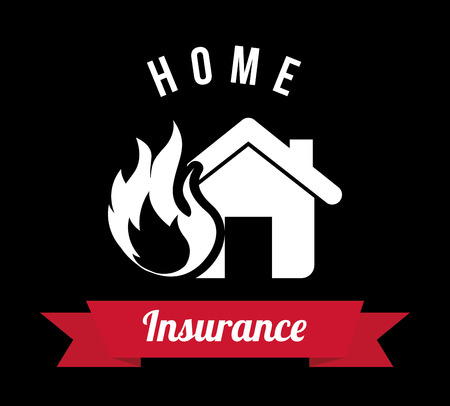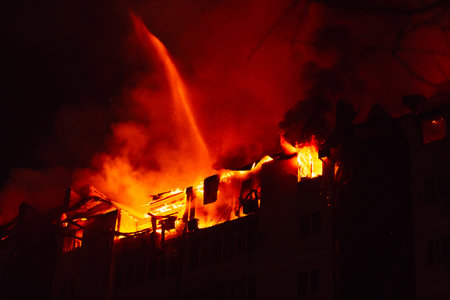Understanding Listed Buildings in the UK
Listed buildings are properties in the United Kingdom that have been officially recognised as having special architectural or historic interest. These structures form a crucial part of Britain’s cultural heritage, representing everything from medieval churches and stately homes to industrial mills and Victorian terraces. The listing process ensures that their unique characteristics are preserved for future generations, preventing unsympathetic alterations or demolition without proper oversight.
In the UK, listed buildings are classified under three main grades according to their significance. Grade I buildings are of exceptional interest, sometimes considered internationally important; only about 2.5% of listed buildings fall into this category. Grade II* (Grade Two Star) buildings are particularly important and of more than special interest, comprising around 5.8% of listings. The majority—about 91.7%—are Grade II, which identifies them as nationally important and of special interest.
The classification is governed by heritage laws including the Planning (Listed Buildings and Conservation Areas) Act 1990 in England and Wales, with similar legislation in Scotland and Northern Ireland. This legal framework means owners must obtain consent before making changes that could affect a building’s character. As these buildings face unique risks from fire, theft, and flood due to their age and distinctive construction methods, it is vital for owners to understand their responsibilities and the need for specialised insurance solutions tailored to protect Britain’s irreplaceable built heritage.
2. Unique Risks Facing Heritage Properties
Listed buildings in Britain are uniquely vulnerable to a range of risks, most notably fire, theft, and flood. These historic structures face distinct challenges due to their age, construction techniques, and legal protections. Unlike modern properties, listed buildings often feature ageing materials such as timber beams, lime mortar, and original glazing that increase susceptibility to damage.
Fire Risk Factors
Older electrical wiring, open fireplaces, and wooden structural elements make heritage properties particularly prone to fire outbreaks. Restoration restrictions may also limit the installation of modern fire prevention systems or fire doors. This can significantly elevate the cost of mitigation and insurance.
Theft Concerns
Antique fittings, rare architectural features, and valuable artefacts are attractive targets for thieves. Accessibility can be an issue—while these properties must remain open for public enjoyment or regular use, this also increases the risk of unauthorised access and theft.
Flood Vulnerability
Many listed buildings are situated in historic town centres or rural locations prone to flooding. Original building materials often lack modern waterproofing, making restoration after flood events both challenging and costly.
Key Challenges Table
| Risk | Susceptibility Factors | Restoration/Insurance Challenges |
|---|---|---|
| Fire | Aged wiring; flammable materials; restricted upgrades | Limits on modern systems; high repair costs for authentic materials |
| Theft | Valuable historical items; public accessibility | Need for discrete security; specialist insurance valuation |
| Flood | Lack of damp-proofing; location in flood-prone areas | Bespoke repairs; compliance with heritage guidelines increases costs |
Summary Analysis
The combination of ageing materials, difficult access for emergency services, and strict restoration rules makes listed buildings especially susceptible to these risks. Insurers must factor in not only the likelihood of loss but also the high cost and complexity of returning properties to their original state after damage. Understanding these unique vulnerabilities is essential when seeking adequate listed building insurance in Britain.

3. Essential Insurance Coverages for Listed Buildings
Protecting Britain’s listed buildings requires a tailored insurance approach, as their heritage value and unique construction present specific risks and responsibilities. Here are the essential types of insurance cover every owner should consider:
Building Insurance: Core Structural Protection
The foundation of any listed building policy is comprehensive building insurance. This cover goes beyond standard home insurance by accounting for the higher costs of using traditional materials and specialist craftsmen required for repairs. The policy should provide reinstatement cover based on a professional valuation, factoring in the need to comply with strict planning permissions under UK heritage laws.
Specialist Contents Cover: Safeguarding Irreplaceable Items
Listed properties often contain valuable period features, antique furnishings, or bespoke fixtures integral to their character. Standard contents insurance may not suffice for these high-value or unique items. Specialist contents cover offers protection against theft, fire, and accidental damage, ensuring items can be restored or replaced in line with their historic value.
Accidental and Structural Damage Protection
Accidents happen, but repairing damage in a listed building is rarely straightforward. Policies should include accidental damage cover for both buildings and contents, addressing events such as burst pipes or broken windows. More critically, structural damage protection ensures that if the integrity of original walls, roofs, or foundations is compromised—whether by flood, subsidence, or other incidents—repairs will meet heritage standards without imposing unexpected costs on owners.
Additional Considerations
Owners should also consider legal expenses cover for disputes related to planning permissions or unauthorised works. Public liability cover is advisable if the property is open to visitors, protecting against injury claims. By choosing policies specifically designed for the complexities of listed buildings, owners can ensure that Britain’s architectural heritage remains secure for future generations.
4. Navigating Legal and Regulatory Requirements
Owning a listed building in Britain involves more than just maintenance—it brings a range of legal and regulatory obligations that directly impact insurance, restoration, and repair work. This is especially crucial when protecting heritage properties from risks such as fire, theft, or flood.
Understanding Listed Status and Your Responsibilities
A listed building is officially recognised as being of special architectural or historic interest. Owners are legally required to preserve its character, and unauthorised alterations can lead to criminal prosecution. The most significant requirements include compliance with:
- Historic England: Provides guidance and must be consulted for significant changes.
- Local Planning Authorities (LPAs): Grant Listed Building Consent (LBC) before any alterations or repairs are undertaken.
- The Planning (Listed Buildings and Conservation Areas) Act 1990: Sets the statutory framework for works on listed properties.
Summary Table: Key Legal Obligations for Listed Property Owners
| Requirement | Description | Relevant Authority |
|---|---|---|
| Listed Building Consent (LBC) | Needed for any alteration, extension, or demolition affecting character | Local Planning Authority |
| Compliance with Restoration Standards | Must use appropriate materials/methods in restoration & repairs | Historic England & LPA |
| Insurance Notification | Insurers must be informed of listed status & works planned/completed | Your Insurance Provider |
| Risk Assessments & Emergency Plans | Essential for fire/flood prevention and response planning | LPA & Insurer May Require Evidence |
| Record Keeping & Documentation | Maintain thorough records of permissions, works, and materials used | LPA & Historic England (if audited) |
The Cost of Non-Compliance: Financial Implications
If an owner undertakes unauthorised works, they may face enforcement action, compulsory reinstatement costs, or even criminal charges. Insurance policies may also become void if regulations are breached. Thus, the cost of compliance—while sometimes higher due to specialist materials and contractors—is typically far less than the potential penalties or uninsured losses.
Cultural Stewardship and Ongoing Dialogue
Bearing responsibility for a listed property means acting as a steward of Britain’s cultural heritage. Maintaining ongoing communication with both insurers and regulatory authorities ensures both legal compliance and adequate protection against risks like fire, theft, or flood. By understanding your obligations and factoring them into your insurance arrangements, you safeguard not only your investment but also the nation’s heritage.
5. Cost Considerations and Premium Factors
Understanding the cost structure of listed building insurance in Britain is crucial for property owners seeking to protect their heritage assets from fire, theft, and flood. Several key factors influence insurance premiums, each contributing to the overall financial planning required for effective coverage.
Building Grade
The grade of a listed building—Grade I, Grade II*, or Grade II—directly impacts insurance costs. Higher-grade buildings often feature unique architectural details and rare materials, making repairs or reinstatement more complex and expensive. Insurers consider these elements when calculating premiums, with Grade I properties typically attracting higher rates due to their exceptional historical significance and restoration requirements.
Reinstatement Value
The reinstatement value is the estimated cost to restore the property to its original state following damage. For listed buildings, this figure can be substantially higher than standard rebuild costs, as it must account for specialist materials, skilled craftsmen, and compliance with heritage regulations. Accurate valuation by a qualified surveyor is essential to avoid underinsurance, which could leave owners facing significant out-of-pocket expenses.
Location-Related Risks
Where a listed building is situated affects its risk profile and, consequently, the insurance premium. Properties in areas prone to flooding—such as riverside or low-lying regions—or those with higher crime rates face increased risks of damage or theft. Insurers assess postcode data and local risk history when setting prices. Urban locations may also present additional challenges if access for emergency services or repairs is restricted.
Risk History and Security Measures
Insurers review the claims history associated with both the property and the owner. A history of frequent claims or previous incidents of fire, theft, or flood will generally lead to higher premiums. Conversely, implementing robust security systems (such as monitored alarms or CCTV), fire prevention measures, and regular maintenance can help mitigate risks and potentially lower insurance costs.
Summary Cost Breakdown
In summary, the typical cost breakdown for listed building insurance involves:
- Base premium: Influenced by grade, location, and size of the property.
- Additional coverage: Such as accidental damage or legal protection.
- Excess levels: The amount payable by the owner in the event of a claim.
- Discounts/Loadings: Adjusted based on security features and claims history.
The complexity of insuring listed properties necessitates tailored policies that reflect their heritage value while balancing affordability and comprehensive protection.
6. Choosing the Right Insurance Provider
Selecting a suitable insurance provider is a critical step in safeguarding your listed building against fire, theft, and flood. Not all insurers possess the expertise required to address the unique risks and regulatory requirements associated with heritage properties in Britain. Here’s a structured approach to help you make an informed decision.
Experience with Listed Buildings
Start by narrowing your options to insurers who specialise in listed building insurance. These providers understand the complexities of heritage protection, including the necessity for traditional materials and specialist tradespeople during repairs. Ask potential insurers for case studies or references from similar property owners, ensuring they have proven experience handling claims for Grade I, II*, or II listings.
Comparing Policy Features
Next, scrutinise policy features beyond standard cover. Comprehensive listed building insurance should include:
- Full rebuild cost cover, factoring in conservation requirements and specialist restoration techniques.
- Alternative accommodation if your property becomes uninhabitable due to insured events.
- Protection for period fixtures, outbuildings, boundary walls, and original architectural elements.
Ensure the policy provides adequate sums insured and check if it covers legal expenses related to compliance with local authority regulations after a claim.
Exclusions and Limitations
Heritage property policies can contain exclusions specific to listed buildings, such as limited cover for unoccupied premises or restrictions on certain types of renovation work. Carefully review these exclusions and ask for clarification on any ambiguous terms. Pay particular attention to:
- Flood risk exclusions based on location or past incidents.
- Requirements for fire alarms, security systems, or regular maintenance checks.
An insurer experienced in listed buildings should offer tailored advice on how to mitigate these risks rather than simply excluding them from cover.
Claims Support and Service Standards
The claims process can be more complex for heritage properties due to consent requirements and specialist restoration needs. Assess each insurer’s reputation for claims support—look for dedicated claims teams familiar with heritage regulations and relationships with trusted conservation contractors. Fast response times and transparent communication are crucial when dealing with fire, theft, or flood incidents.
Cost vs Value Analysis
While premium costs are important, value should take precedence over price alone when insuring a listed building. Cheaper policies may lack essential features or impose restrictive excesses that undermine effective protection. Compare quotes carefully, weighing coverage depth against overall costs—including potential out-of-pocket expenses during claims.
Ultimately, choosing an insurer with genuine heritage expertise ensures your property receives the specialised protection it deserves, helping preserve Britain’s architectural legacy for future generations.


